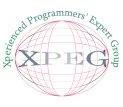Popular
Biometric Methodologies
You will see
reference to a number of biometrics, some of which are rather impractical
even if technically interesting. The ‘popular’ biometrics seem to gravitate
at present around the following methodologies.
1)
Fingerprint verification
There are a
variety of approaches to fingerprint verification. Some of them try to
emulate the traditional police method of matching minutiae, others are
straight pattern matching devices, and some adopt a unique approach all of
their own, including moiré fringe patterns and ultrasonics. Some of them can
detect when a live finger is presented, some cannot. There is a greater
variety of fingerprint devices available than any other biometric at
present. Potentially capable of good accuracy (low instances of false
acceptance) fingerprint devices can also suffer from usage errors among
insufficiently disciplined users (higher instances of false rejection) such
as might be the case with large user bases. One must also consider the
transducer / user interface and how this would be affected by large scale
usage in a variety of environments. Fingerprint verification may be a good
choice for in house systems where adequate explanation and training can be
provided to users and where the system is operated within a controlled
environment. It is not surprising that the workstation access application
area seems to be based almost exclusively around fingerprints, due to the
relatively low cost, small size (easily integrated into keyboards) and ease
of integration.
2) Hand
geometry
As the name
suggests, hand geometry is concerned with measuring the physical
characteristics of the users hand and fingers, from a three dimensional
perspective in the case of the leading product. One of the most established
methodologies, hand geometry offers a good balance of performance
characteristics and is relatively easy to use. This methodology may be
suitable where we have larger user bases or users who may access the system
infrequently and may therefore be less disciplined in their approach to the
system. Accuracy can be very high if desired, whilst flexible performance
tuning and configuration can accommodate a wide range of applications. Hand
geometry readers are deployed in a wide range of scenarios, including time
and attendance recording where they have proved extremely popular. Ease of
integration into other systems and processes, coupled to ease of use makes
hand geometry an obvious first step for many biometric projects.
3)
Retinal scanning
An
established technology where the unique patterns of the retina are scanned
by a low intensity light source via an optical coupler. Retinal scanning has
proved to be quite accurate in use but does require the user to look into a
receptacle and focus on a given point. This is not particularly convenient
if you are a spectacle wearer or have concerns about intimate contact with
the reading device. For these reasons retinal scanning has a few user
acceptance problems although the technology itself can work well. The
leading product underwent a redesign in the mid nineties, providing enhanced
connectivity and an improved user interface; however this is still a
relatively marginal biometric technology.
4) Iris
scanning
Iris
scanning is undoubtedly the less intrusive of the eye related biometrics. It
utilizes a fairly conventional CCD camera element and requires no intimate
contact between user and reader. In addition it has the potential for higher
than average template matching performance. As a technology it has attracted
the attention of various third party integrators and one would expect to see
additional products launched in due course as a result. It has been
demonstrated to work with spectacles in place and with a variety of ethnic
groups and is one of the few devices which can work well in identification
mode.
5)
Facial recognition
A technique
which has attracted considerable interest and whose capabilities have often
been misunderstood. Extravagant claims have sometimes been made for facial
recognition devices which have been difficult if not impossible to
substantiate in practice. It is easy to understand the attractiveness of
facial recognition from the user perspective, but one needs to be realistic
in ones expectations of the technology. To date, facial recognition systems
have had limited success in practical applications. However, progress
continues to be made in this area and it will be interesting to see how
future implementations perform. If technical obstacles can be overcome, we
may eventually see facial recognition become a primary biometric
methodology.
6)
Voice verification
A
potentially interesting technique bearing in mind how much voice
communication takes place with regard to everyday business transactions.
Some designs have concentrated on wall mounted readers whilst others have
sought to integrate voice verification into conventional telephone handsets.
Whilst there have been a number of voice verification products introduced to
the market, many of them have suffered in practice due to the variability of
both transducers and local acoustics. In addition, the enrolment procedure
has often been more complicated than with other biometrics leading to the
perception of voice verification as unfriendly in some quarters. However,
much work has been and continues to be undertaken in this context and it
will be interesting to monitor progress accordingly.
XPEG
methodologies
As discussed
above, we can adopt variety of methods to achieve a robust biometric
security system. But the major driving thought behind XPEG was to come up
with the less costly solution while maintaining a high level of robustness.
Hence, going for Voice and Facial based biometric system was an obvious
choice for XPEG. But still there was a problem. Can we really achieve a high
level of robustness with these methodologies in the backend process? The
Research and Development team of XPEG worked on the problem for a year and
came up with a unique solution that helped to manage a high level of
robustness. XPEG developed some new techniques and a protocol suit that
enabled the system to work in a network as well as in a standalone
environment. It helped XPEG to reduce the cost of the system while updating
the system for more number of client ends.
|

